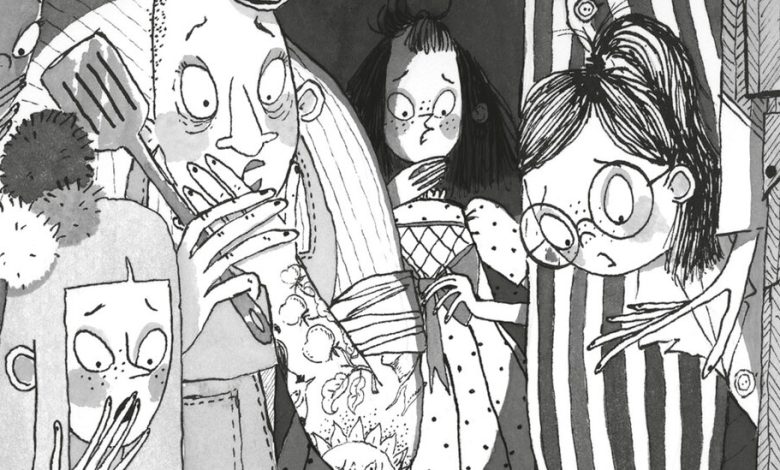Unusual Suspects

Every child is a detective. It comes with the territory.
Childhood is a constant state of trying to unravel the mysteries of the world, while being thwarted at every turn. Adults stop talking when you enter the room. They use coded language. They lie. Being a child is a wildly frustrating and essentially powerless experience. The detection you do (working out why those teachers are walking to school together, climbing walls to watch people going past below you) is generally frowned upon. And if you’re on fire about injustice, you’re told to calm down and grow up.
This is why it’s such a joy to write, and read about, fictional child detectives: Not only do they get to be heroes; they also get to reshape the world.
They can be angry, bad and weird. Like my characters Daisy Wells and Hazel Wong, schoolgirls with eight murder investigations under their belts, they can speak truth to power.
Three notable middle grade mysteries (two published earlier this year and one forthcoming in the fall) feature young sleuths who question the world around them and are undaunted when the answers they receive aren’t the ones they hoped for. These novels are vastly different from one another in tone. Beth Lincoln’s THE SWIFTS: A Dictionary of Scoundrels (Dutton, 352 pp., $17.99, ages 8 to 12), illustrated by Claire Powell, is deliciously, quirkily Gothic, like “Gormenghast” for children. Martha Brockenbrough’s TO CATCH A THIEF (Scholastic, 256 pp., $17.99, ages 8 to 12) is a slice of small-town coziness. And Johan Rundberg’s THE NIGHT RAVEN: The Moonwind Mysteries, Book 1 (Amazon Crossing Kids, 192 pp., $17.99, ages 10 and up), translated by A.A. Prime, is chilly Nordic noir. But they all share the same worldview: that children can and should act out, that what they care about matters.
Shenanigan Swift, the heroine of “The Swifts,” comes from a family whose members are given names at birth that are meant to describe them for the rest of their lives. By this logic, Shenanigan is destined to make problems and cause trouble, while her sister Phenomena is destined to be a scientist. But when Shenanigan is drawn into a series of bizarre murders at her family’s reunion, she begins to wonder if she might actually be better at fixing things than at breaking them.
The sweet, diffident Amelia MacGuffin in “To Catch a Thief” inhabits a gentler story, where neighboring shop owners with crushes on each other are called Bonnie and Clyde, the cat-owning crime writer’s name is Dr. Agatha and the mystery to be solved is the disappearance of the town’s lucky wooden staff carried every year in its “world famous” Dragonfly Day Festival parade.
Small problems (the safety of the town’s darner dragonfly population, the welfare of a stray dog) are treated with the loving seriousness they deserve. Amelia may not be tracking a serial killer, but Brockenbrough understands what the stakes mean to her, and never allows the narrative to become flippant or belittling. Amelia has to find resolve she didn’t know she had to crack her case.
Mika in “The Night Raven” (winner of Sweden’s August Prize) — an orphan girl in late-19th-century Stockholm, where it’s cold in every sense of the word and children are in genuine peril — is dragged into a terrifying murder mystery when a police investigator notices her sharp eyes and deductive skills. There’s a wonderful scene in which she’s mistaken for a thief and bursts into tears — “but she isn’t sad; she’s furious.” Mika is upset about her place in society and the prospects of her fellow orphans, which drives her to uncover the truth.
It’s often stubbornness and anger that give child detectives their edge. They’re enraged by the limitations put on them and channel this rage into solving crimes. Yes, they’re on the trail of a villain, but they’re also investigating themselves, hunting for clues about who they are and who it’s possible to be.
Shenanigan’s world is rocked as she meets more and more family members who defy Swift conventions — like her nonbinary cousin, Erf, who has named themself and taken control of their destiny. Amelia, meanwhile, is plagued by anxiety about her supposed lack of identity, worrying about whether she’s the kind of person who is “good at plans and schemes,” while the case Mika is unraveling will lead her to a revelation about her own identity as well as the killer’s.
At the end of all three books, the detectives realize that they are both more than they thought and exactly who they always were.
I won’t spoil the endings, other than to say that each book demonstrates a cleareyed understanding of the price of knowledge, and all the detectives must wrestle with their own morality and heartbreak. It’s a testament to the authors that none of the solutions comes easily — in any good mystery story, truth is a messy and painful business.
It’s a delight to see that so many authors working in children’s crime fiction are creating heroes who speak up, speak out and spur young readers to work through their own tough questions about identity and justice.
Robin Stevens is the author, most recently, of “Top Marks for Murder,” the eighth book in her middle grade mystery series, Murder Most Unladylike.
